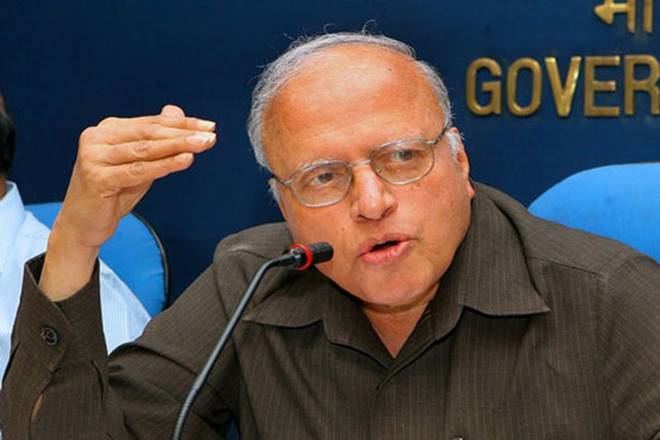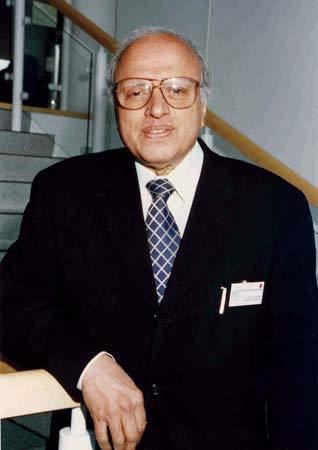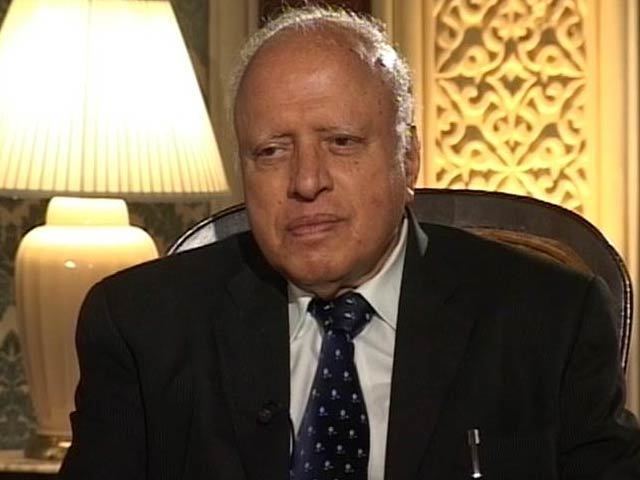Name M. Swaminathan Fields Agricultural science | Nationality India Role Scientist | |
 | ||
Born 7 August 1925, KumbakonamMadras Presidency ( 1925-08-07 ) Institutions MS Swaminathan Research Foundation Alma mater H H M University College ThiruvananthapuramTamil Nadu Agricultural UniversityFitzwilliam College, CambridgeUniversity of Wisconsin-Madison Books In Search of Biohappiness: Biodiversity and Food, Health and Livelihood Security Died 28 September 2023 (aged 98) Chennai, Tamil Nadu, India Children 3; including Soumya Thesis Species Differentiation, and the Nature of Polyploidy in certain species of the genus Solanum–section Tuberarium (1952) Doctoral advisor H. W. Howard Similar Lal Bahadur Shastri, Soumya Swaminathan, Mina Swaminathan | ||
A p j abdul kalam worked till last second of his life m s swaminathan geneticist
Mankombu Sambasivan Swaminathan (7 August 1925 – 28 September 2023) was an Indian geneticist and international administrator, renowned for his leading role in India's Green Revolution a program under which high-yield varieties of wheat and rice seedlings were planted in the fields of poor farmers. Swaminathan was known as "Indian Father of Green Revolution" for his leadership and success in introducing and further developing high-yielding varieties of wheat in India. He was the founder and chairman of the MS Swaminathan Research Foundation. His stated vision is to rid the world of hunger and poverty. Swaminathan was an advocate of moving India to sustainable development, especially using environmentally sustainable agriculture, sustainable food security and the preservation of biodiversity, which he calls an "evergreen revolution."
Contents
- A p j abdul kalam worked till last second of his life m s swaminathan geneticist
- In conversation dr m s swaminathan
- Early life and education
- Early career
- Professional achievements
- Notable mentions
- Publications
- Honours awards and international recognition
- Critics
- Current work
- Death
- References

From 1972 to 1979 he was director general of the Indian Council of Agricultural Research. He was Principal Secretary, Ministry of Agriculture from 1979 to 1980. He served as Director General of the International Rice Research Institute (1982–88) and became president of the International Union for the Conservation of Nature and Natural Resources in 1988.

In 1999, Time magazine placed him in the 'Time 20' list of most influential Asian people of the 20th century.
In conversation dr m s swaminathan
Early life and education

M. S. Swaminathan was born in Kumbakonam on 7 August 1925. He was the second son of surgeon Dr. M.K. Sambasivan and Parvati Thangammal Sambasivan. M.S. Swaminathan learnt from his father, "that the word 'impossible' exists mainly in our minds and that given the requisite will and effort, great tasks can be accomplished." Surgeon M.K. Sambasivam, a follower of Mahatma Gandhi, took the lead in Kumbakonam in "burning his foreign clothes," a symbolic act in support of the Swadeshi movement: which emphasized the use of Indian rather than foreign-made clothes, and handloomed rather than mill-spun cloth. The political purpose of the swadeshi movement was to free India from dependence on foreign imports and to protect village industry. His father led in opening the temples to [Dalit]s, part of the temple entry movement of the Indian independence movement in Tamil Nadu, and in eradicating filariasis in Kumbakonom, an area long infected with the dread disease. The sense of service to one's fellow man was thus ingrained in him early.

After his father's death when he was 11, young Swaminathan was looked after by his uncle, M. K. Narayanaswami, a radiologist. He attended the local high school and later the Catholic Little Flower High School in Kumbakonom, from which he matriculated at age 15. Coming from a family of doctors, he naturally took admission in a medical school. But, when he witnessed the Great Bengal famine of 1943, he decided to devote his life for getting rid of hunger from India. He was influenced by Mahatma Gandhi while he took this decision. He simply switched from the medical field to the agricultural field. He then went on to finish his undergraduate degree at Maharajas College in Trivandrum, Kerala (now known as University College, Thiruvananthapuram). He studied there from 1940–44 and earned a Bachelor of Science degree in zoology.

M.S. Swaminathan was married to Mina Swaminathan, whom he met in 1951 while they were both studying at Cambridge. They live in Chennai, Tamil Nadu. They have three daughters and five grandchildren. Their daughters are Dr. Soumya Swaminathan, the Director General of ICMR-India, Dr. Madhura Swaminathan, who is a Professor of Economics at the Indian Statistical Institute, Bangalore and Nitya Swaminathan, a Senior Lecturer in Gender Analysis and Development at the University of East Anglia.
Early career

Swaminathan then decided to pursue a career in agricultural sciences. He enrolled in Madras Agricultural College ( now the Tamil Nadu Agricultural University ) where he graduated as valedictorian with another Bachelor of Science degree, this time in Agricultural Science. He explained this career decision thus: "My personal motivation started with the great [Bengal famine of 1943], when I was a student at the University of Kerala. There was an acute rice shortage, and in Bengal about 3 million people died from starvation. All of our young people, myself included, were involved in the freedom struggle, which Gandhi had intensified, and I decided I should take to agricultural research in order to help farmers produce more."

In 1947, the year of Indian independence he moved to the Indian Agricultural Research Institute (IARI) in New Delhi as a post-graduate student in genetics and plant breeding. He obtained a post-graduate degree with high distinction in Cytogenetics in 1949. He wrote the Union Public Service Commission exam and qualified for the Indian Police Service.
He chose to accept the UNESCO Fellowship to continue his IARI research on potato genetics at the Wageningen Agricultural University, Institute of Genetics in the Netherlands. Here he succeeded in standardising procedures for transferring genes from a wide range of wild species of Solanum to the cultivated potato, Solanum tuberosum. In 1950, he moved to study at the Plant Breeding Institute of the University of Cambridge School of Agriculture. He earned a Doctor of Philosophy (PhD) degree in 1952, for his thesis, "Species Differentiation, and the Nature of Polyploidy in certain species of the genus Solanum – section Tuberarium." His work presented a new concept of the species relationships within the tuber-bearing Solanum. His Cambridge college, Fitzwilliam, made him an Honorary Fellow in 2014.
Swaminathan then accepted a post-doctoral research associateship at the University of Wisconsin, Department of Genetics to help set up a USDA potato research station. Despite his strong personal and professional satisfaction with the research work in Wisconsin, he declined the offer of a full-time faculty position, returning to India in early 1954.
Professional achievements
Swaminathan worked worldwide in collaboration with colleagues and students on a wide range of problems in basic and applied plant breeding, agricultural research and development and the conservation of natural resources.
His professional career began in 1949:
Established the International Plant Genetic Resources Institute (changed in 2006 to Bioversity International).
Notable mentions
On the occasion of the presentation of the First World Food Prize to Swaminathan in October 1987, Javier Perez de Cuellar, Secretary General of the United Nations, wrote: "Dr. Swaminathan is a living legend. His contributions to Agricultural Science have made an indelible mark on food production in India and elsewhere in the developing world. By any standards, he will go into the annals of history as a world scientist of rare distinction."
Swaminathan was described by the United Nations Environment Programme as "the Father of Economic Ecology."
He was one of three from India included in Time magazine's 1999 list of the "20 most influential Asian people of the 20th century," the other two being Mahatma Gandhi and Rabindranath Tagore.
Swaminathan was the featured speaker at the 2006 Norman E. Borlaug International Symposium in Des Moines, Iowa on, 19 October 2006. He was sponsored by Humanities Iowa, an affiliate of the National Endowment for the Humanities. Swaminathan presented the "Third Annual Governor's Lecture" and spoke on "THE GREEN REVOLUTION REDUX: Can we replicate the single greatest period of food production in all human history?" about the cultural and social foundations of the Green Revolution in India and the role of historic leaders in India, such as Mahatma Gandhi, in inspiring the Green Revolution there by calling for the alleviation of widespread hunger. He talked about the links between Gandhi and the great Iowa scientist George Washington Carver.
Swaminathan was a Fellow of the Royal Society of London, the U.S. National Academy of Sciences, the Russian Academy of Sciences, the Chinese Academy of Sciences, and the Italian Academy of Sciences.
Publications
Dr Swaminathan was a prolific scientific researcher and writer. He published 46 single-author papers between 1950 and 1980. Out of 118 two author papers, he was first author of 80. Out of 63 three-author papers he was first author of 15. Out of 21 four-author papers he was first author of 9. In total he had 254 papers to his credit, 155 of which he was the single or first author. His scientific papers are in the fields of crop improvement (95), cytogenetics and genetics (87) and phylogenetics (72). His most frequent publishers were Indian Journal of Genetics (46), Current Science (36), Nature (12) and Radiation Botany (12). Some of the papers are listed below.
In addition he wrote a few books on the general theme of his life's work, biodiversity and sustainable agriculture for alleviation of hunger.
Swaminathan's books include
"Sustainable Agriculture: Towards Food Security"
Research reports He published laboratory research results in several scientific journals and increasingly writes for a wider audience in environmental journals. Some of his publications are available online in abstract or full text. and.
A scientific paper in which Swaminathan and his team claimed to have produced a mutant breed of wheat by gamma irradiation of a Mexican variety (Sonora 64) resulting in Sharbati Sonora claimed to have a very high lysine content led to a major controversy. The case was discussed as a classic example of scientific misdemeanor and was claimed to be an error made by the laboratory assistant. The episode was also compounded by the suicide of an agricultural scientist. Recent workers have studied it as part of a systemic problem in Indian agriculture research.
Honours, awards and international recognition
Swaminathan received several outstanding awards and prizes. These prizes include large sums of money, which has helped sustain and expand his work.
protection and management of the environment. Co – winner with Paul and Anne Ehrlich 1994, $200,000 prize.
He holds more than 50 honorary Doctorate degrees from universities around the world.
National Awards
He has been honoured with several awards in India for his work to benefit the country.
International Awards
He has been honoured with recognition from several international organisations for spreading the benefits of his work to other countries.
Fellowships
Critics
Despite these awards and honours, the credibility of Swaminathan and his promotion of biotechnology remains open to question by some. His record retains some controversy. In 1967 Swaminathan published a paper on a variety called Sharbati Sonora which he claimed had more lysine than the Mexican strains from which it was derived. It was re-examined by CIMMYT and found in 1969 to be incorrect. In 1972 Vinod Shah, an agronomist at the ICAR committed suicide and claimed that Swaminathan collected poor quality data to support his ideas. A committee was set up and an investigation was conducted into the Sharbati Sonora case. It was determined that someone had intentionally altered the value of the lysine content so that Sharbati Sonora was viewed positively. The report of the committee noted that it was not an isolated incident and that such practice "pervades the entire scientific and academic community in this country. At the root of it is the greed for bureacratic power and love of a comfortable life that afflicts this class." The first among those who came to expose many of the claims made by MS Swaminathan was Claude Alvares. In his article The Great Gene Robbery 23 March 1986 The Illustrated Weekly. Alvares provided arguments to show that most of the research that was initiated by him and the International Rice Research Institute was not original. Shiv Vishwanathan in an EPW article wrote he is a sociological phenomenon. He is paradigm, exemplar, dissenter, critic and alternative. .....Swaminathan always assimilates the new. Claude Alvares gives a different picture:
Strangely, he become more and more akin to HYV of the seeds he sells. Like them, he is capable of high-yielding varieties of phrase and word. At a Gandhi seminar, he will speak of the relevance of Gandhi. At a meeting in Madras on the necessity of combine harvesters. At another meeting on appropriate technology, he will plump for organic manures. At a talk in London, he will speak on the necessity of chemical fertilizers. He will label slum dwellers ‘ecological refugees’, and advertise his career as a quest for ‘imparting an ecological basis to productivity improvement.’ This, after presiding over, and indiscriminately furthering, one of the ecologically most devastating technologies of modern times – the HYV package of the Green revolution.
Current work
from millions of his fellow human beings on this Earth. For that, we can all be thankful".
Death
M. S. Swaminathan died at his home in Chennai on 28 September 2023, at the age of 98.
